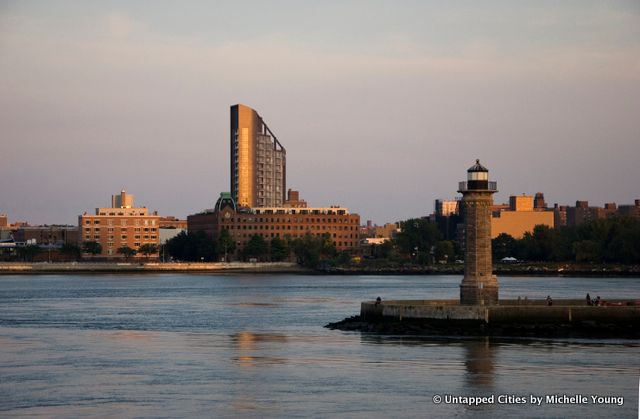NYC’s Forgotten ‘War on Christmas Trees’
Discover how an obscure holiday crackdown affects festive street vendors today!



New York City, situated on one of the largest natural harbors in the world, once required many lighthouses to aid maritime navigators. This week’s featured Foursquare list is a roundup of the city’s finest lighthouses, some of which are no longer active (and one that was never functional to begin with!).
Little Red Lighthouse: Also called Jeffrey’s Hook Lighthouse, Little Red is perhaps most well-known as the “protagonist” of The Little Red Lighthouse and the Great Gray Bridge. This 1942 children’s book tells the true story of the George Washington Bridge’s overshadowing of the Little Red Lighthouse. Thankfully, fans of the lighthouse (and book) rallied to save it from destruction, and today, the lighthouse has been restored and relit.
Blackwell Island Lighthouse: Before the lighthouse was built, John McCarthy, an asylum patient on Blackwell (now Roosevelt) Island, built a fort in 1870 to defend against a British invasion. Two years later, the fort was torn down and a lighthouse constructed in its place, this time by a patient named Thomas Maxey. Strangely, a plaque at the lighthouse’s base still credited the structure to McCarthy, prompting historians to believe either that Maxey and McCarthy were the same person or that neither existed.

Coney Island Light: This lighthouse was first erected and lit in 1890 in order to guide incoming ferries carrying the increasing amounts of visitors to the island. Still operational today, the lighthouse is famous mostly because its final civilian keeper, Frank Schubert, held the post for 43 years and is credited for climbing 87 stairs each day and saving 15 sailors.
950 University Avenue: Unfortunately, the lighthouse sitting on top of the former H.W. Wilson headquarters in the Bronx is not functional. Rather, the lighthouse, also present in the publishing house’s logo, symbolizes the company’s mission “to give guidance” to readers navigating different books and publications. Jean Marra, a former editor for Reader’s Digest tells us “Although it’s hard to see from the Deegan, the lighthouse rests on an opened book and had a working beacon.”Wilson merged with EBSCO in 2012 and moved out of the building. Tuck-It-Away storage, which painted the lighthouse orange, currently occupies the address.

Titanic Memorial: The Titanic Memorial Lighthouse was once situated on top of the Seaman’s Church Institute. Commemorated a year after the sinking of the Titanic, the lighthouse served mostly to remind cityfolk of the tragedy. To accomplish this, a green light would shine every night, while a time ball would drop down the pole of the lighthouse at noon every day.
Elm Tree Lighthouse: Before Elm Tree Lighthouse was lit in 1856, an actual giant elm tree stood in its place and served as a guide for sailors passing Staten Island. The area has gone through many transformations; now, it’s home to many sports fields, which stand in stark contrast to the (decommissioned) towering concrete lighthouse.
Staten Island Range Lighthouse: One of the City’s newest lighthouses (1906) is also its most architecturally traditional; the external appearance of this lighthouse evokes New England stylings. Like Coney Island, the Staten Island Lighthouse once had a dedicated keeper–Joe Esposito, working unpaid–who kept both the interior and exterior of the tower well-preserved and pristine.
Robin Reef Lighthouse

Robins Reef Lighthouse, located on the New Jersey side of the Hudson River and viewable on the Staten Island Ferry was originally built in 1839. The present tower was built in 1883.
For more buildings that play up NYC’s harbor location, check out Untapped’s guides to nautical architecture!
Get in touch with the author @YiinYangYale.
Subscribe to our newsletter